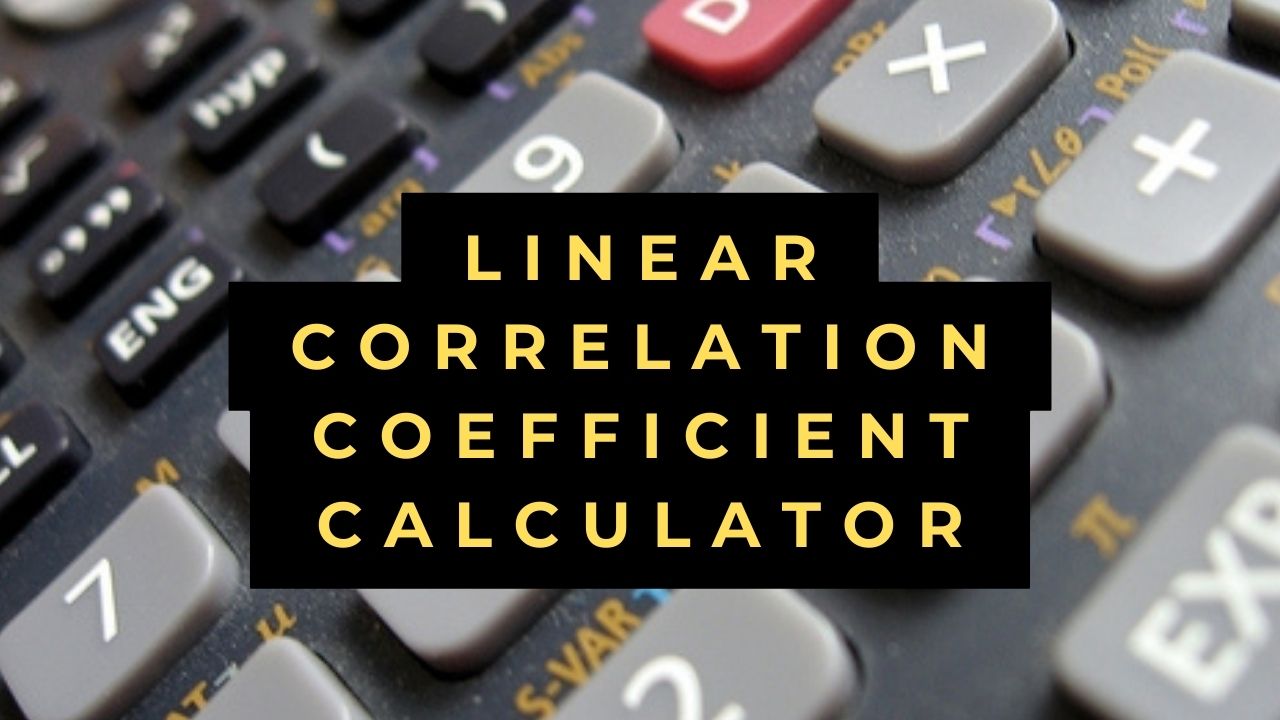Linear Correlation Coefficient Calculator
- Linear Approximation Calculator
- Line Graph Calculator
- Like Fractions Calculator
- Length Conversion Calculator
Linear Correlation Coefficient Calculator with Steps
Easily compute the linear correlation coefficient of two variables with the Linear Correlation Coefficient Calculator. Learn how to measure the strength and direction of linear relationships accurately and efficiently. Simplify your statistical analyses today!
Linear Correlation Coefficient Calculator
Welcome to our comprehensive guide on calculating linear correlation coefficients using the Linear Correlation Coefficient Calculator. The linear correlation coefficient, also known as Pearson’s correlation coefficient, quantifies the strength and direction of the linear relationship between two variables. In this article, we’ll delve into the concept of linear correlation coefficients, their significance, and demonstrate how to use our calculator to compute them effortlessly.
Understanding Linear Correlation Coefficient Calculator
In statistics, the linear correlation coefficient measures the degree to which two variables are linearly related. It ranges from -1 to +1, where:
- r=+1 indicates a perfect positive linear relationship,
- r=−1 indicates a perfect negative linear relationship,
- r=0 indicates no linear relationship between the variables.
Importance of Accurate Computation
Accuracy is crucial in statistical analyses. Whether you’re conducting research, analyzing data, or making predictions, precise computations ensure reliable results. When assessing linear relationships between variables, accurate calculation of the correlation coefficient is essential for drawing valid conclusions from data.
How the Linear Correlation Coefficient Calculator Works
The Linear Correlation Coefficient Calculator simplifies the process of calculating correlation coefficients by providing instant and accurate results. Simply input the paired values of the two variables into the designated fields, and the calculator will compute the correlation coefficient automatically. Our user-friendly interface makes it accessible to users of all statistical proficiency levels.
Step-by-Step Guide to Using the Linear Correlation Coefficient Calculator
- Enter Paired Values: Input the paired values of the two variables into the respective fields.
- Click Calculate: Initiate the calculation process by clicking the calculate button.
- View Result: Instantly receive the linear correlation coefficient of the entered paired values.
Practical Applications
Linear correlation coefficients find application in various real-world scenarios, including economics, social sciences, and engineering. Whether you’re analyzing financial data, studying consumer behavior, or examining experimental results, understanding and computing correlation coefficients are fundamental for drawing meaningful insights from data.
Advantages of Using the Linear Correlation Coefficient Calculator
- Efficiency: Saves time by automating the process of computing correlation coefficients.
- Accuracy: Provides precise results, minimizing the risk of errors in statistical analyses.
- Insightful: Offers valuable insights into the relationships between variables, aiding in decision-making processes.
Common Errors to Avoid
When using the Linear Correlation Coefficient Calculator, users should be cautious of common errors that can affect the accuracy of computations:
- Incorrect Data Entry: Double-check the inputted paired values to ensure accuracy in calculation.
- Inappropriate Interpretation: Understand the limitations of correlation coefficients and avoid making unwarranted assumptions based solely on correlation.
- Ignoring Outliers: Consider the presence of outliers in the data, as they can significantly influence correlation coefficients.
Tips for Efficient Computation
To optimize efficiency and accuracy when computing linear correlation coefficients, consider the following tips:
- Visualize Data: Plot the paired values on a scatter plot to visually assess the nature of the relationship between variables.
- Understand Significance Levels: Familiarize yourself with significance levels and confidence intervals to interpret correlation coefficients effectively.
- Perform Sensitivity Analysis: Evaluate the robustness of correlation coefficients by conducting sensitivity analyses with different subsets of data.
FAQs
Q: Can the Linear Correlation Coefficient Calculator handle datasets with missing values?
No, the calculator requires complete paired values for both variables to compute the correlation coefficient.
Q: Is the Linear Correlation Coefficient Calculator suitable for educational purposes?
Absolutely! The calculator is an excellent educational tool for teaching and learning about correlation analysis.
Q: Can I access the Linear Correlation Coefficient Calculator on mobile devices?
Yes, the calculator is compatible with both desktop and mobile platforms, ensuring accessibility on the go.
Q: Does the calculator provide additional statistical measures besides the correlation coefficient?
While the calculator focuses on computing correlation coefficients, users can explore additional statistical measures in dedicated statistical software packages.
Q: Are there any fees associated with using the Linear Correlation Coefficient Calculator?
No, the calculator is free to use and requires no subscription or payment.
Q: Can I trust the accuracy of the correlation coefficients provided by the calculator?
Absolutely! The calculator employs robust algorithms to ensure precise and reliable computation of correlation coefficients.
Conclusion
In conclusion, understanding and computing linear correlation coefficients are essential skills in statistical analyses and data interpretation. The Linear Correlation Coefficient Calculator serves as a valuable tool for simplifying this process, offering efficiency, accuracy, and insightful interpretations. By following the guidelines outlined in this article, you can confidently navigate the world of correlation analysis and draw meaningful conclusions from your data.

